
Leon Levy Native Plant Preserve | Governor’s Harbour, Bahamas | Raymond Jungles
由专筑网K&C,小R编译
Leon Levy 原生植物保护区是合作、协同和热情的文化中构思的产物。保护区的建设实现了长住居民 Leon Levy 和 Shelby White 的愿望,他们热爱伊柳塞拉岛的自然环境和生活方式。在2003 年 Leon Levy 去世后,Shelby White 希望能够缅怀她丈夫对伊柳塞拉岛的热爱,为所有岛屿居民创造更美好的未来。Levy先生热爱着这座岛屿,曾忧虑过岛上对本土植物药用价值的认识和使用的快速消逝。
The Leon Levy Native Plant Preserve was conceived in a culture of cooperation, collaboration, and enthusiasm. The Preserve is the fulfilment of the vision of longtime residents Leon Levy and Shelby White, who loved the natural environment and way of life on Eleuthera. After Leon Levy’s passing in 2003, Shelby White wanted to celebrate her husband’s devotion to the island while contributing to a better future for all Eleutherans. Mr. Levy loved the island and was concerned that the knowledge and use of the medicinal value of the island’s native plants were rapidly diminishing.
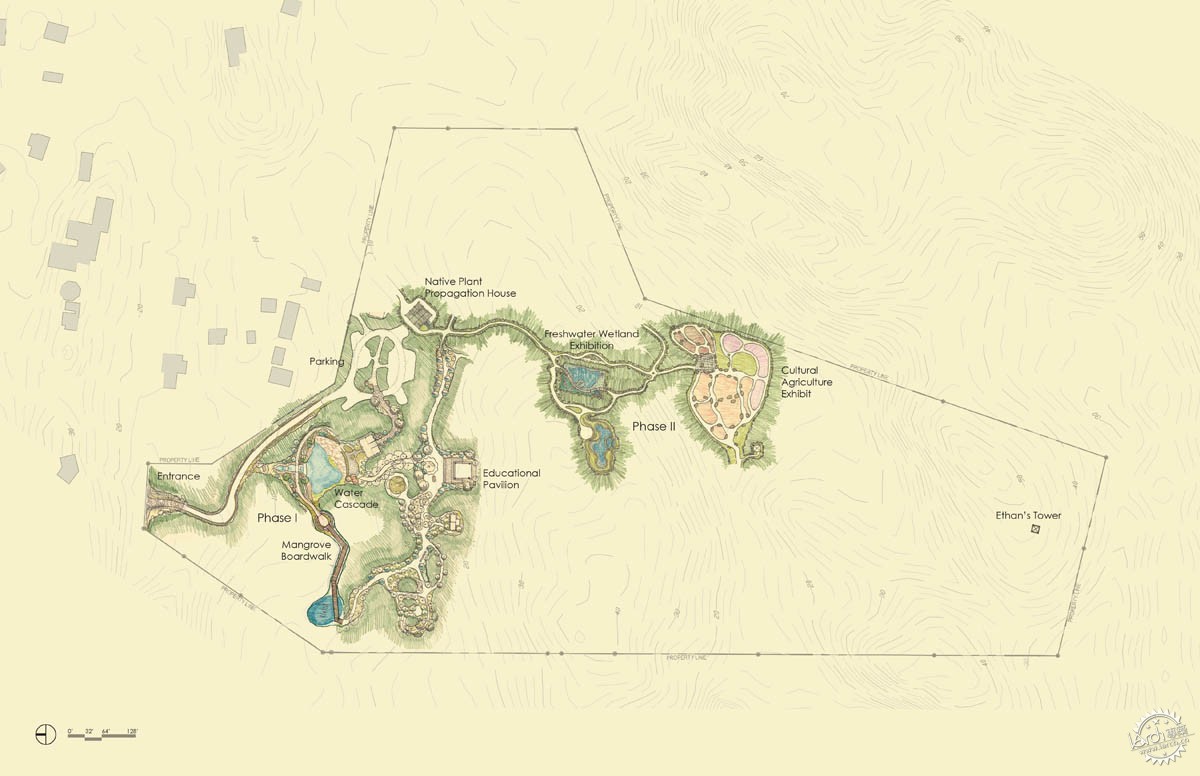
这个占地 30 英亩的保护区由巴哈马国家信托基金会、Leon Levy 基金会共同创建。巴哈马国家信托基金是一个以科学为基础的组织,致力于国家公园的有效管理,以修复保护巴哈马自然资源。Leon Levy 基金会是基于Leon Levy 的遗产所创建的私人非营利基金会。两个组织现已共同建立了伊柳塞拉的首个国家公园、专门针对传统丛林医学的研究中心、本土植物树木种植基地、以及一座聚焦原生植物对巴哈马生物多样性重要性的教育中心。
项目的主旨是提高人们对巴哈马植物多样性和丛林医学的保护意识,对标Leon Levy基金会慈善遗产下的一个主题:自然和花园保护。创始人希望保护区内动植物的多样性能够激励后代继续对本地物种和栖息地进行保护,解决多年森林砍伐、入侵物种和单一栽培农业实践造成的有害影响。
This 30-acre preserve was jointly created by the Bahamas National Trust and the Leon Levy Foundation. The Bahamas National Trust is a science-based organization dedicated to effectively managing national parks to conserve and protect Bahamian natural resources. The Leon Levy Foundation is a private, not-for-profit foundation created from Leon Levy’s estate. These two organizations have now formed the first National Park on Eleuthera, a designated research center for traditional bush medicine, a facility for the propagation of indigenous plants and trees, and an educational center focusing on the importance of native vegetation to the biodiversity of the Bahamas.
The project’s primary focus was to raise awareness of Bahamian plant diversity and bush medicine, aligning with one of the six broad areas for the Leon Levy Foundation’s philanthropic legacy: Preservation of Nature and Gardens. The founders hope that the diversity of the Preserve’s plant and animal life will inspire subsequent generations to preserve native species and habitat and address the pernicious effects of years of deforestation, invasive species importation, and monoculture agricultural practices.

场地主要由陡峭、多岩、干燥的森林和已耕种的低退化地区组成。当地的生态一直遭受不断的外来物种入侵,非法倾倒垃圾毒害着树木和丛林。
The site is comprised mostly of elevated, rocky, dry forest, called coppice, and lower degraded areas that had been cultivated. The native ecology was being impacted by flourishing invasive, exotic trees and rubbish from an illegal, on-site dump.

在第一阶段,Raymond Jungles景观事务所精心策划了保护区设计和主要建筑设施的选址,包括游客中心、教育展馆、后勤运营中心和洗手间。景观设计师还负责设计人车流通和停车场。项目进行了大量的灌木修复,创建了生态系统驱动的花园,如丛林药材展览花园。第一阶段为整个保护区的游客体验奠定了基础,同时利用现有的咸水沼泽、成熟的红树林、次生沙丘和原生灌木作为突出的生态系统。
Throughout Phase I, Raymond Jungles orchestrated the Preserve’s design and siting of main facility structures including a visitor center, educational pavilion, back of house operations center, and restrooms. The landscape architect also designed all vehicular and pedestrian circulation and associated parking. There were extensive coppice restoration and the creation of ecosystem-driven gardens including bush medicine exhibition gardens. Phase I also laid the foundation for the visitor experience throughout the preserve, utilizing existing saltwater marsh with a mature stand of red mangroves, secondary dune, and the native coppice, as highlighted ecosystems.
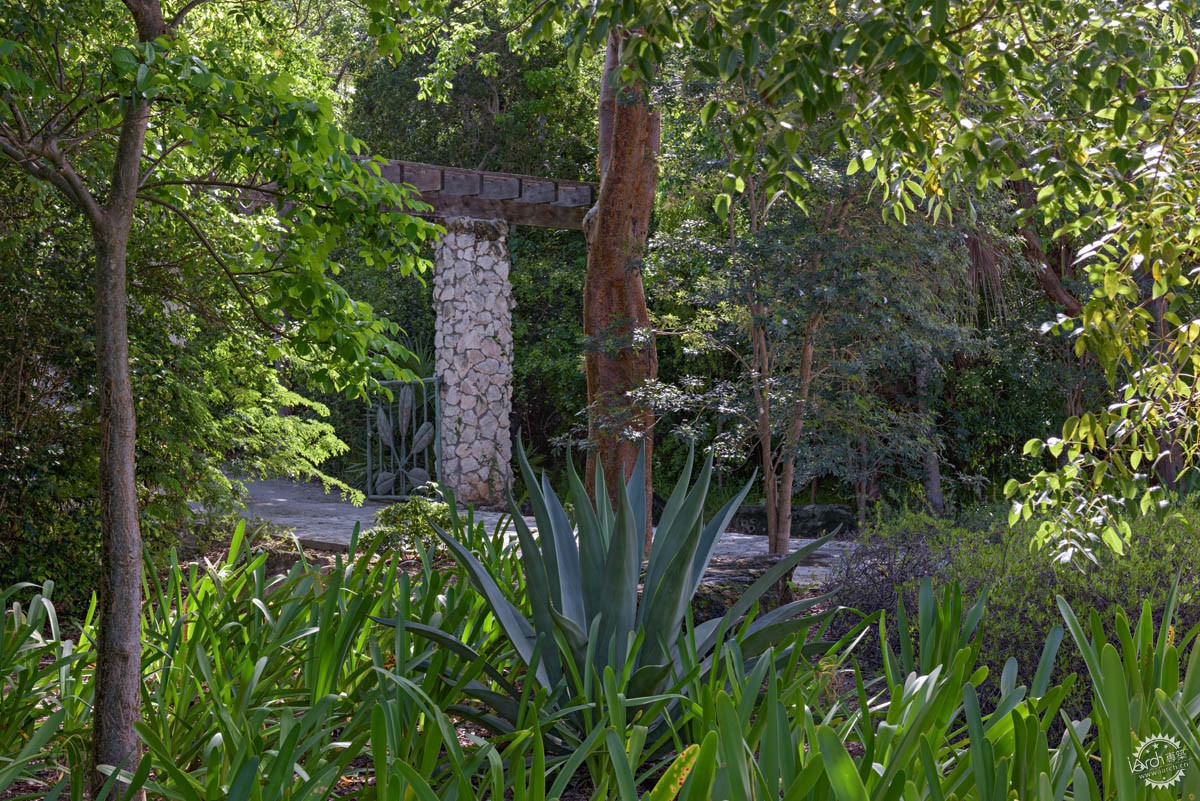
到达体验的强烈特征来自当地泥瓦匠负责的石灰岩边界墙和一座高架凉棚。游客经过一个古老的沙丘,下行到达一个停车场,道路模仿着一种犹如从原生灌木丛中蚀刻出来的形态。前往游客中心的过程十分神秘,因为人们必须穿过一处看似原生的灌木丛。游客中心构想为一座通往保护区花园的门户,它位于非法垃圾场附近,垃圾场在被挖掘清理后露出了古老礁石帽的纹理表面。场地中的椰子棕榈树生长于这座废弃的垃圾场中,它们是沉默的过去见证者,而现在是保护区再生的参与者。
The arrival experience is richly defined by limestone border walls, built by local masons, and an overhead pergola. Visitors pass over an ancient dune, down to the lowlands to a parking area, planted to feel like it was etched out of an existing coppice. The procession to the visitor center is mysterious, as one must wind through a seemingly pre-existent coppice. The visitor center structure was conceived by Jungles to be a portal to the preserve gardens. This visitor’s center was located in the vicinity of the illegal dump. The dump was excavated to remove all the rubbish, revealing the textured surface of an ancient reef cap. The existing coconut palms, which had sprouted from dumped yard waste, were silent witnesses of the past, but now have a voice in the Preserve’s regeneration.
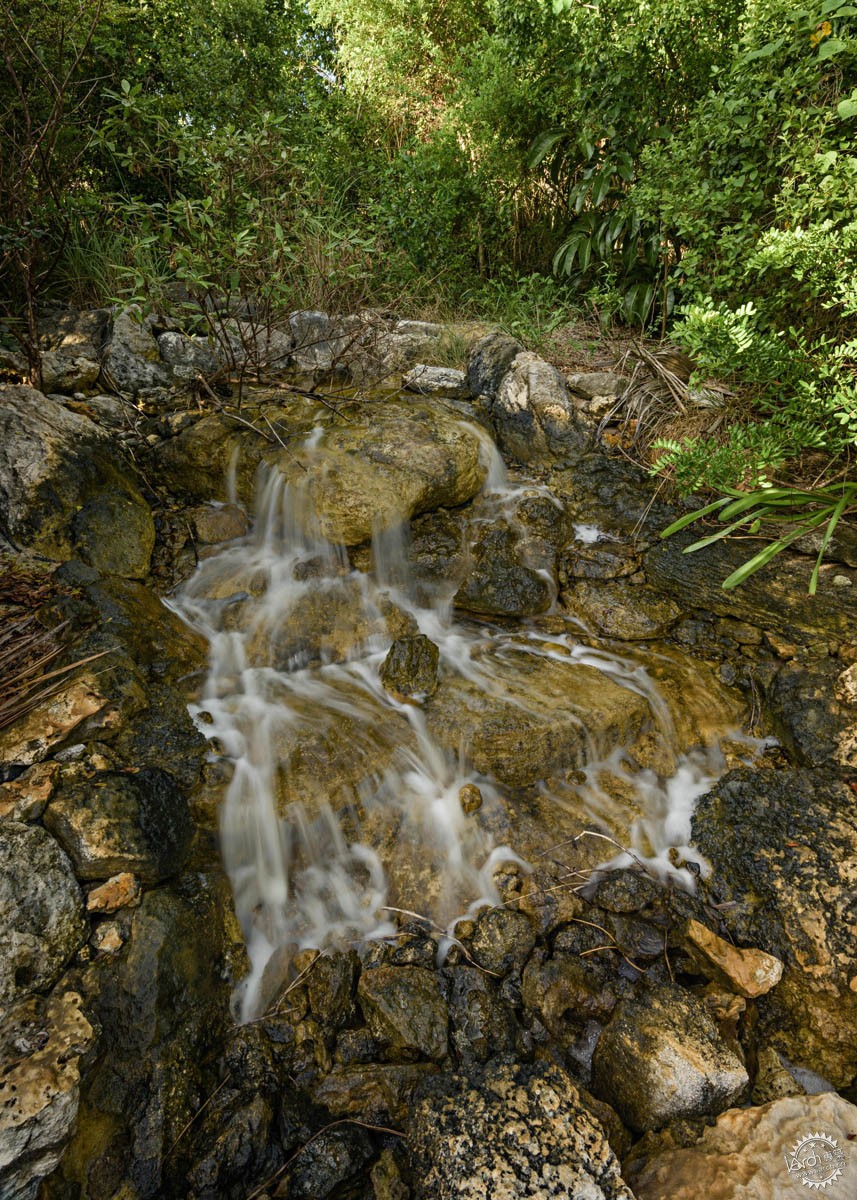
当游客穿过游客中心大楼时,会从一个花园踱步到另一个花园,这个空间被古老沙丘表面的循环水系激活。瀑布飞溅到泻湖中,这一处泻湖通过挖掘垃圾场而形成,低于地下水位线。泻湖建成后不久,鸟类和蜻蜓便已快乐地栖息在这里。
As one passes through the visitor’s center building, from garden to garden, the space is enlivened by a cascade of recirculating water down the face of the ancient dune. The water cascade splashes into a lagoon created through the excavation of the dump, below the water table. Soon after its creation, the lagoon was happily inhabited by birds and dragonflies.
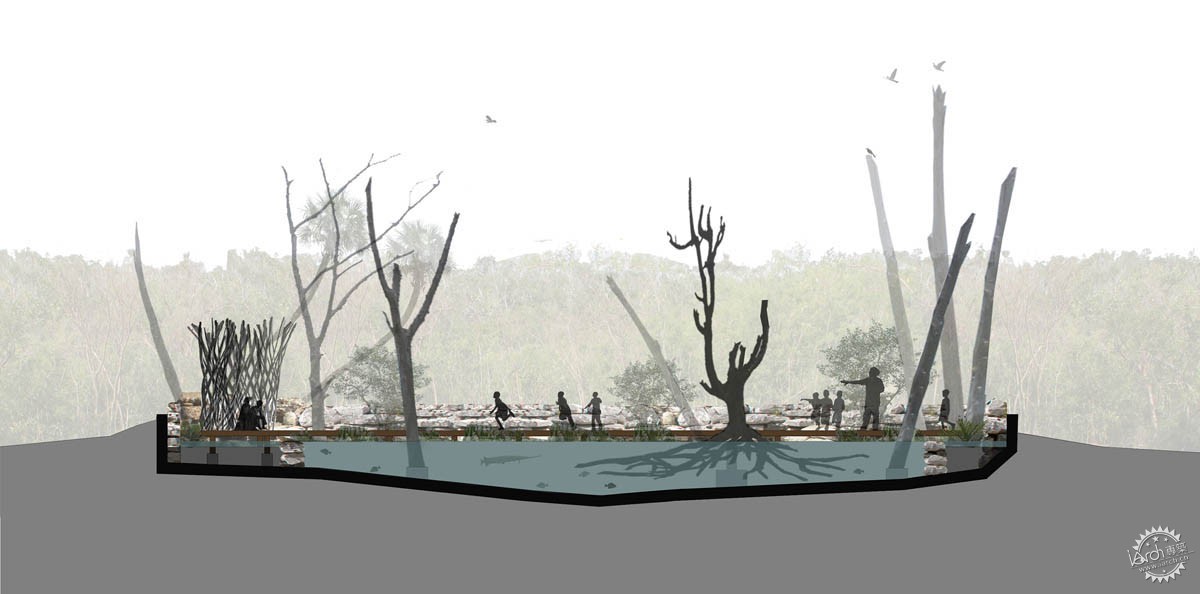
道路在环绕泻湖并穿过水道后,向下通往穿过红色红树林的木板路。木板路对面是一系列丛林药材展览区。教育馆是自然之路的起点,这栋建筑非常灵活,为户外课堂课程、婚礼和其他团体聚会提供场所。更多的丛林药材展览区沿着经过教育馆的小路开放空间陈列,以便游客观赏。所有步道系统都通向游客中心,以及由巴哈马国家信托基金会植物学家选址的引人入胜的观景塔,观景塔穿过巨大的巴哈马灌木丛的壮丽景色受到人们的高度赞赏。
After circumnavigating the lagoon and crossing the watercourse, the path descends to a boardwalk that passes through a red mangrove stand. Across the boardwalks are a series of bush medicine exhibitions. The Education Pavilion, the departure point for nature trails, is a flexible structure that provides shelter for outdoor classroom lessons, weddings, and other group gatherings. More bush medicine exhibitions occur along open space trails past the education pavilion if one prefers to return to the visitor center. All trail systems lead to the visitor center as well as a dramatic viewing tower sited by the Bahamas National Trust’s botanist. Great vistas from the viewing tower across the immense Bahamian coppice are celebrated.
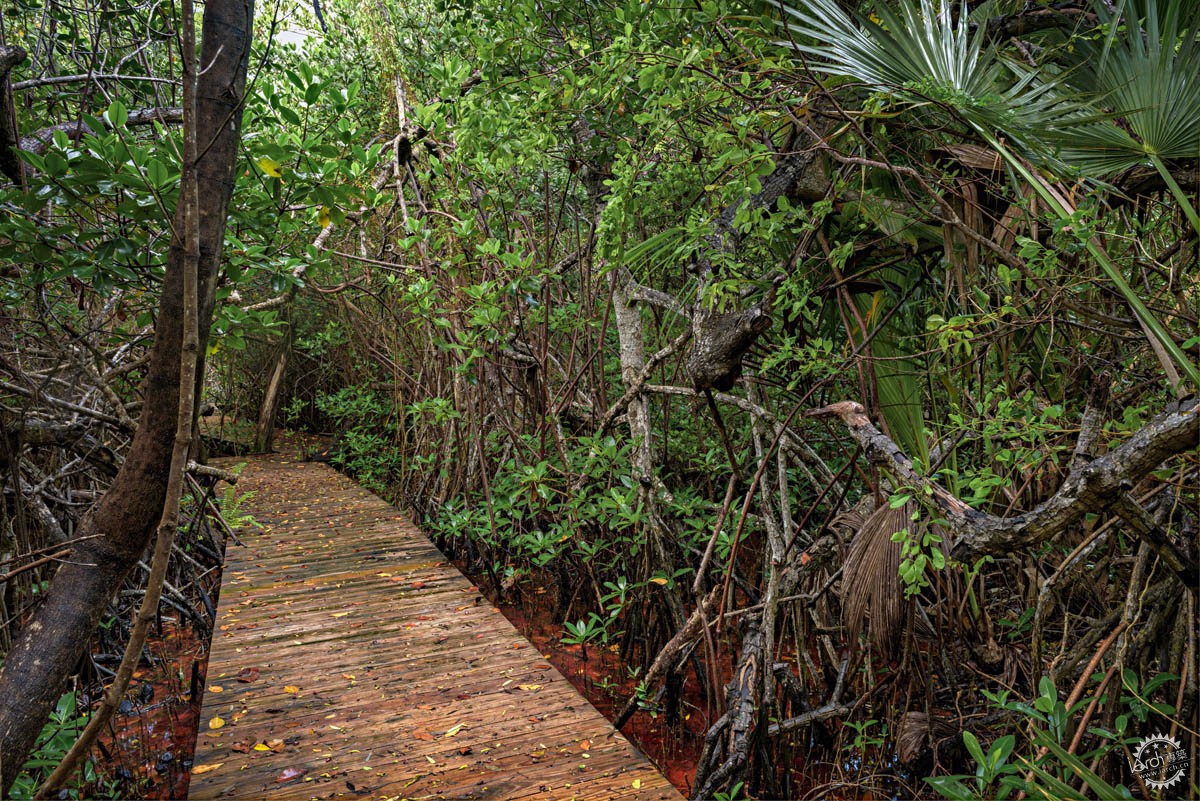
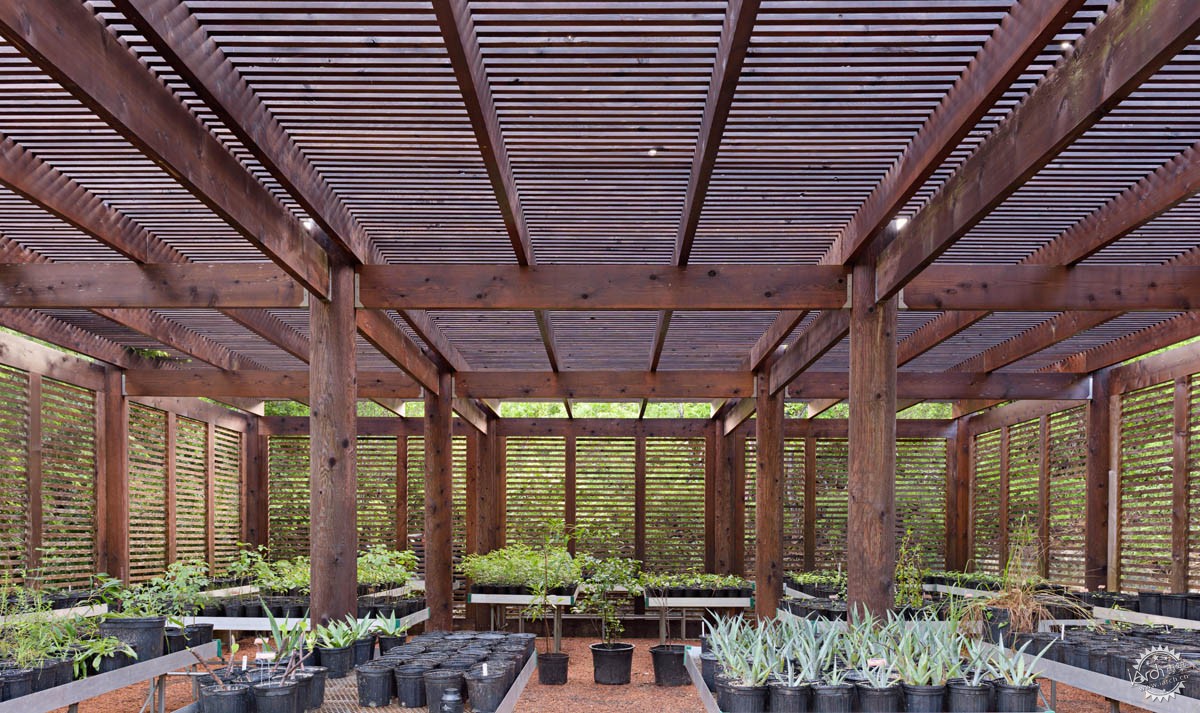
第二阶段预期以巴哈马其他生态系统为特色,为保护区的游客提供额外的教育机会。主要新增设施包括由景观设计师设计的原生植物种植中心、以原有的农业蓄水池改造的淡水湿地,以及建于场地内肥沃土壤上的历史农业展览花园,该花园因数万年的雨水侵蚀而变得丰饶,第二阶段还包括挖掘受到雨水侵蚀氧化的石灰岩地下地层,暴露出隐藏的场地地质给游客参观。
Phase II aspired to feature other Bahamian ecosystems and make additional educational opportunities available to the Preserve’s visitors. Major new additions included a native plant propagation center, designed by the landscape architect, a freshwater wetland created from a pre-existent agricultural cistern, and a historical agricultural exhibition garden located on the site’s most fertile soils, made rich from eons of rainwater erosion from higher ground. Phase II also incorporated the careful excavation of underground formations of limestone oxidized through rainwater erosion, exposing hidden site geology to visitors.
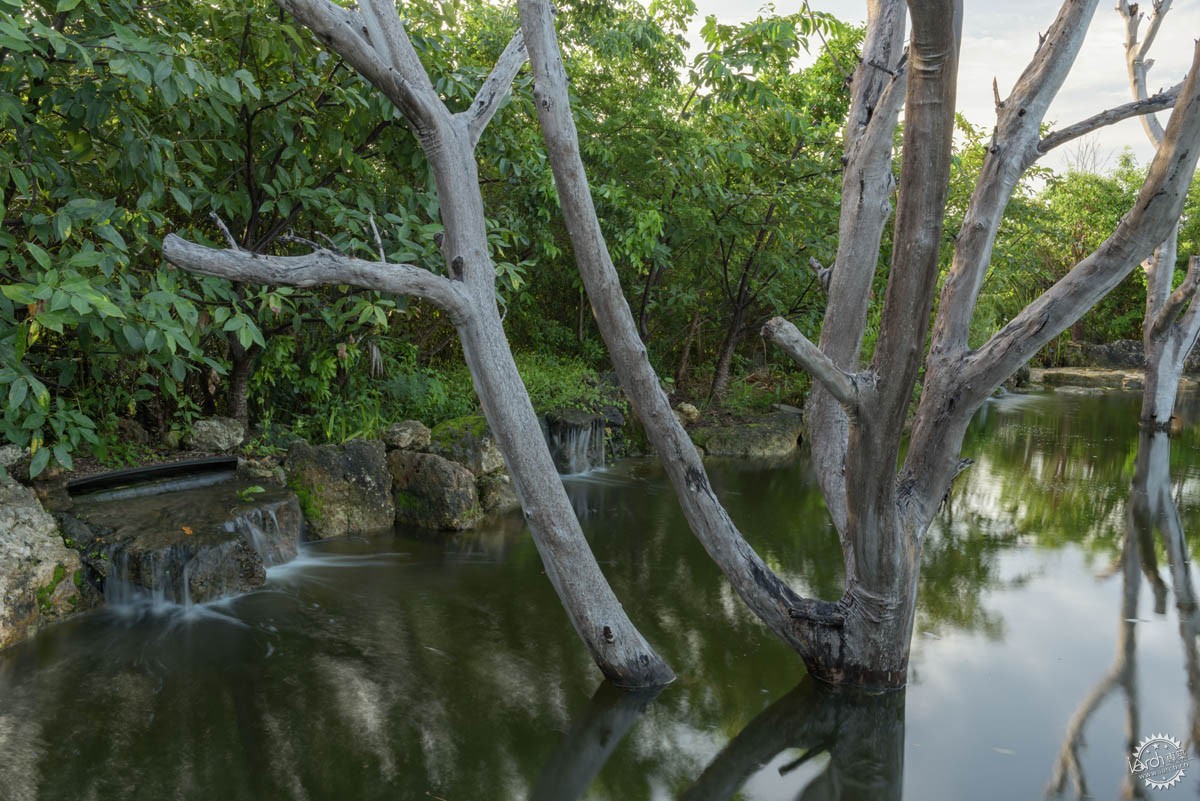
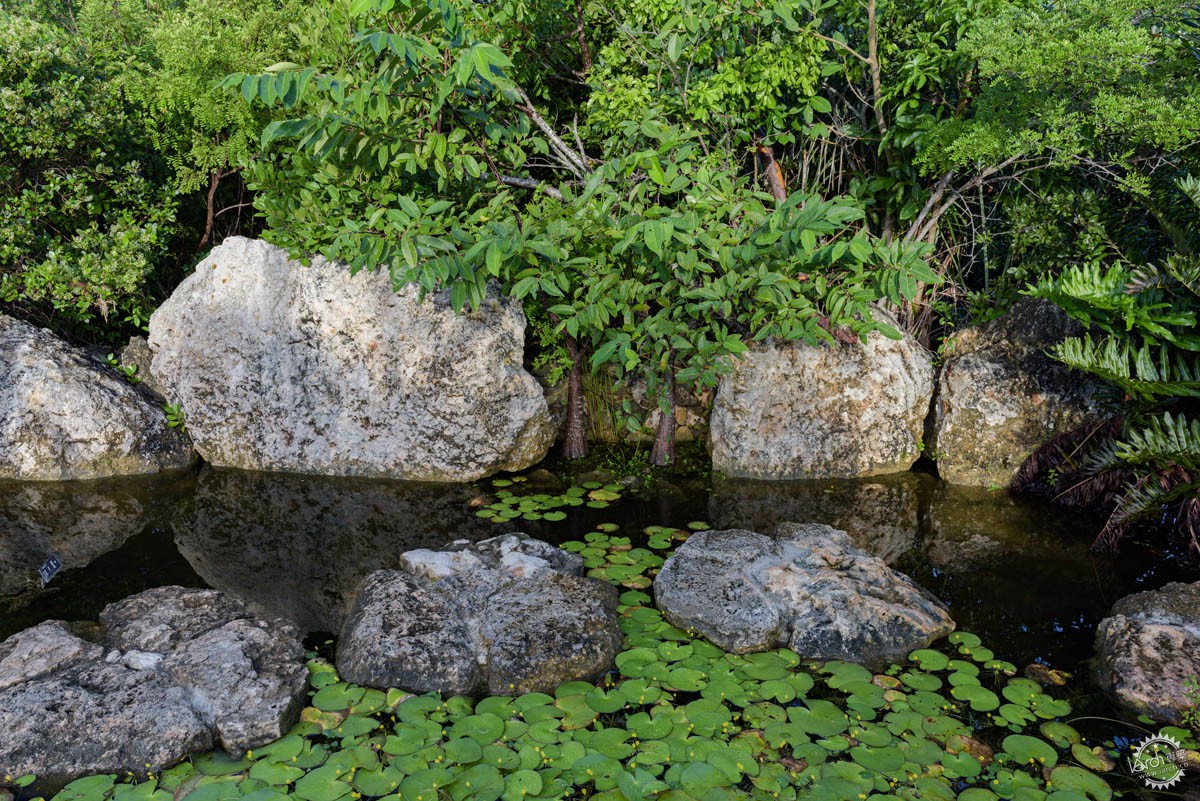
到第二阶段结束时,保护区20% 的土地已恢复为原生植被,将改建为无障碍花园。保护区将成为人类、动物和昆虫的避难所。 Raymond Jungles事务所被选中参与该项目的原因是建筑师对于美国农业部 11B 区植物和生态的深刻理解,而那里与南佛罗里达州的 11A 区和佛罗里达礁岛群 11B 区非常相似。他与保护区的植物学家和巴哈马国家信托基金会的工作人员开展合作,完善了场所的植物种植。
By the end of Phase II, twenty percent of the Preserve had been restored to native vegetation and converted into accessible gardens. It has become a sanctuary for humans, animals, and insects. Raymond Jungles was selected for this project due to his extensive knowledge of USDA zone 11B plants and ecologies, being very similar to South Florida’s Zone 11A, and the Florida Keys Zone 11B. He worked extensively with the Preserve’s botanist and Bahamas National Trust staff in refining the site’s planting plans.
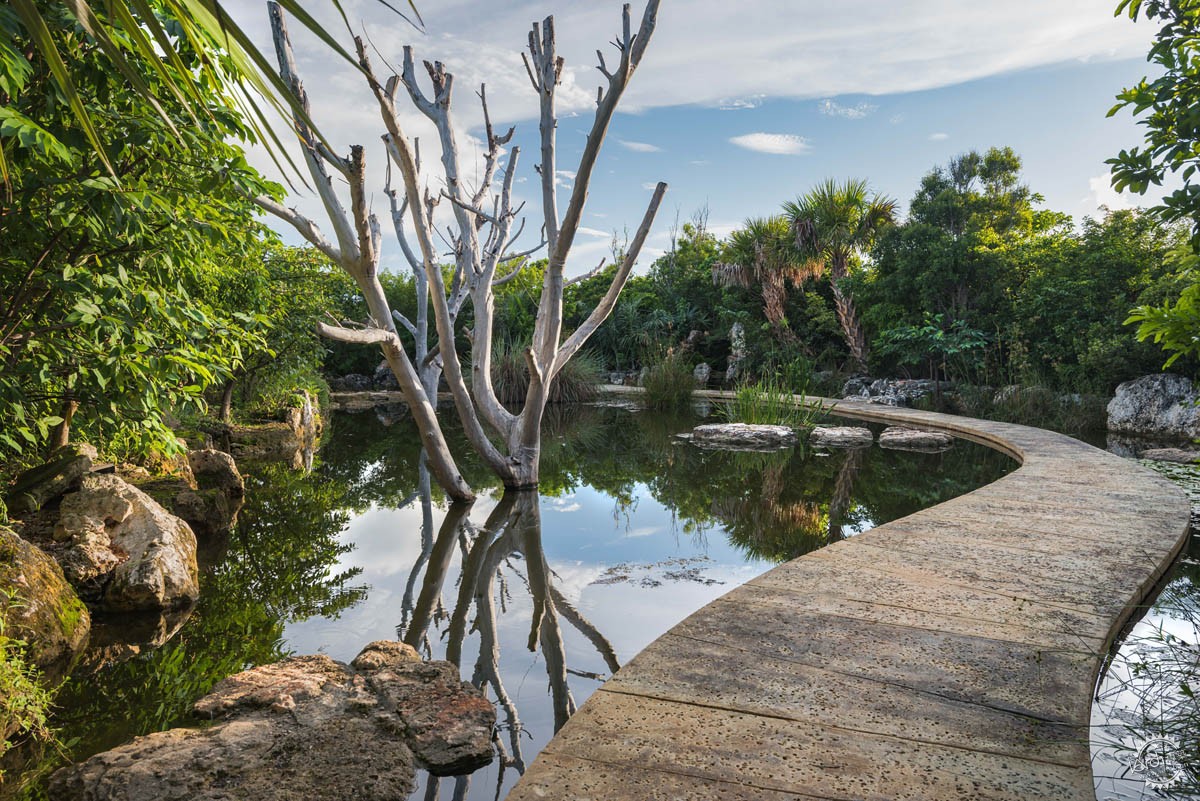

保护区现在拥有高于171 种本土植物和超过 34 种鸟类,包括安的列斯红腹灰雀。在最近增添到场地内的 2,000 种原生树木、灌木和草本中,有 100 多种药用植物和 20多种不同的经济植物。
The Preserve now features over 171 species of indigenous plants and more than 34 species of birds, including the Antillean Bullfinch. Over 100 varieties of medicinal plants and more than 25 different economic plants are among the 2,000 native trees, shrubs and herbs recently added to the site.

公众早已接受了这座保护区,屡创数量纪录的游客们主动宣传着这片原生绿洲的意义。 Jungles事务所认为该项目意义重大,与包括当地社区在内的各种公共和私人利益相关者合作,挖掘出应对项目挑战的最佳解决方案。事实上,这座保护区是 Trip Advisor网站上的“在伊柳塞拉要做的 39 件事”中排名第一的地点。
The public has embraced the Preserve, and record numbers of visitors are propagating awareness of this native oasis. Jungles found the project rewarding, collaborating with a variety of public and private stakeholders, including the local community, to unearth the best solutions to the project’s challenges. In fact, the Preserve is the #1 rated activity on Trip Advisor’s “39 Things to do in Eleuthera.”

Raymond Jungles 事务所现在正在设计第三阶段,即额外的5 英亩土地,将包括扩建的游客中心、学生和科学家的睡眠设施、教师住宿、管护设施和行政楼、活动展馆、活动草坪、水上花园和新的监管系统。
Raymond Jungles is now designing Phase III, an additional 5-acres of land, which will include an expanded visitor center, sleeping facilities for students and scientists, faculty lodging, maintenance and administrative facilities, an event pavilion, an event lawn a water garden, and many new trail systems.
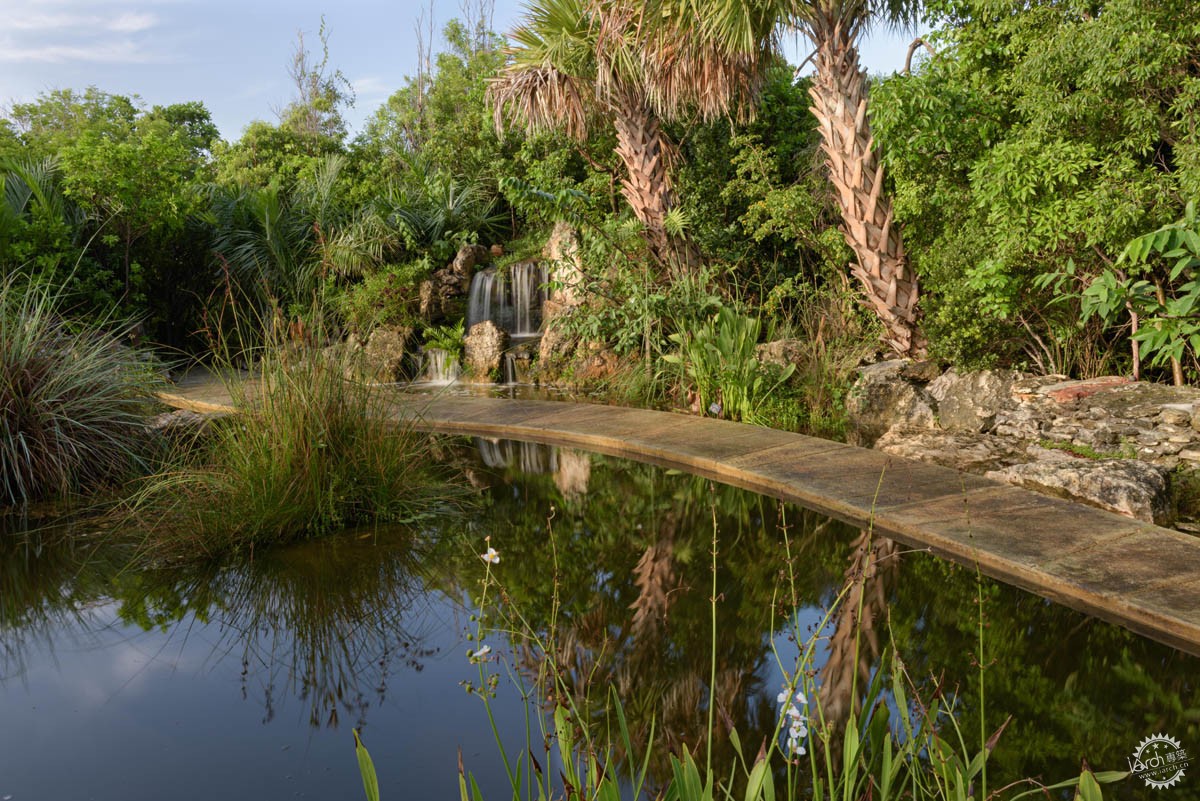
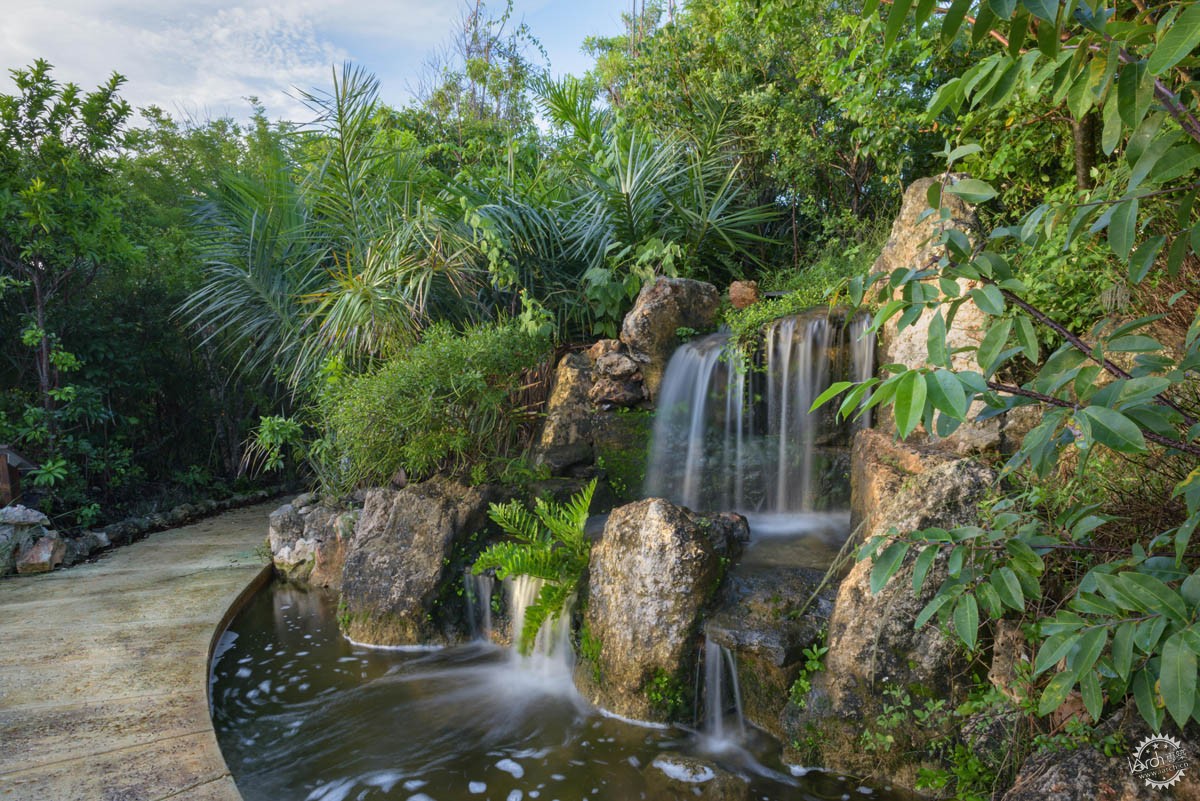
2019 年 4 月,Leon Levy 原生植物保护区成为巴哈马第一个被指定为 BGCI 认证植物园的机构。这一级别的认证由国际植物园保护协会颁发,旨在表彰机构在植物保护方面的成就。
In April 2019, the Leon Levy Native Plant Preserve became the first institution in The Bahamas to be designated a BGCI accredited botanic garden. Issued by Botanic Gardens Conservation International, this tier of accreditation recognizes institutions for their achievements in plant conservation.
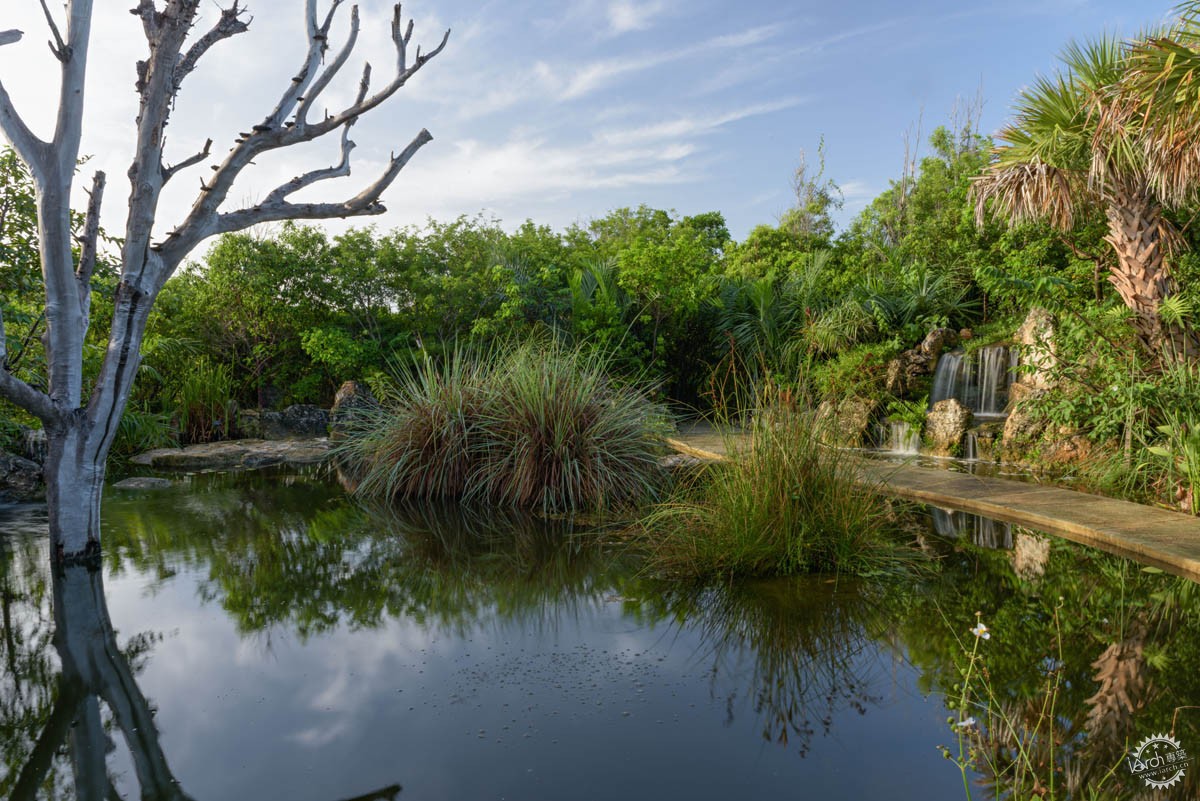
项目信息:
Leon Levy 原生植物保护区
地点:巴哈马总督港
客户:Leon Levy 基金会、巴哈马国家信托基金
总承包商:Sagoma Construction International
建筑设计:Plan It Bahamas
景观设计师:Raymond Jungles, Inc.
植物学家:Ethan H. Freid 博士
摄影:Stephen Dunn Photography
Leon Levy Native Plant Preserve
Location: Governor’s Harbour, Bahamas
Client: The Leon Levy Foundation and the Bahamas National Trust
General Contractor: Sagoma Construction International
Architect: Plan It Bahamas
Landscape Architect: Raymond Jungles, Inc.
Botanist: Ethan H. Freid Ph.D
Photographer: Stephen Dunn Photography
|
|
